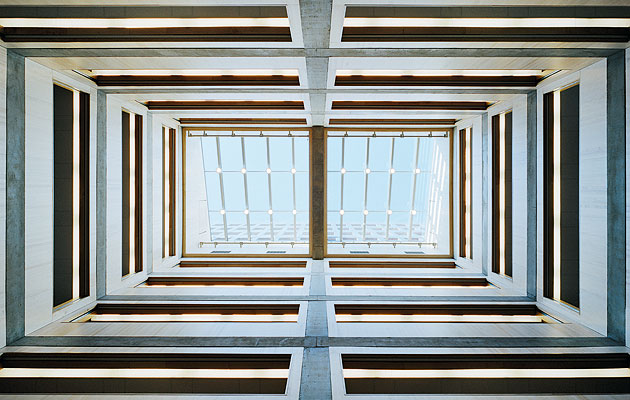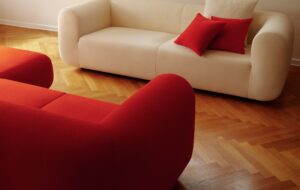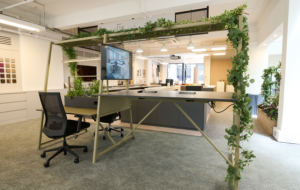|
A glass-covered atrium surrounded by galleries (image: Åke E:Son Lindman) |
||
|
General Architecture’s copper-clad office building in Skelleftea, northern Sweden, has all sorts of conventional characteristics – right angles, windows in walls. But the project has caused a stir in that country, where architecture projects of any size are generally carved up between a small group of established practices, most of whom are past their best. This building has a different set of values to the innocuous glassiness of many recent Scandinavian commercial buildings. General Architecture is a young Stockholm-based office run by five partners: Erik Persson, Olof Grip, Fabian Blücher, Josef Eder and John Billberg. The practice has shown a taste for the large, entering several big competitions and working on masterplans and large-scale feasibility studies. Skelleftea Kraft is by far the practice’s most significant project yet. The commission is for a new office building for the power company in Skelleftea, a small town 800km north of Stockholm. The company is owned by the municipality, and the brief was for a building that would last, and provide some kind of civic identity for the company. What emerged was a building that considers the question of how an office building can also have the permanence and significance of a public building, expressing civic values, rather than the impermanence of a typical spec office development. There is a remorseless rigour to its proportions. Partner Olof Grip says: “The height of two floors of the existing building was 6.5m and we started to use that in all directions. Everything here relates to that measurement.” The structure of the building is concrete, and this is expressed in the delightful raw interior. Playing off against the exposed concrete are bespoke pieces of joinery wrapping the window reveals and galleries internally. The building’s facade is what has caused the fuss. Made of copper, it is monumental in scale and expression – deep window reveals give it a solidity and mass that shows some of the practice’s influences (David Chipperfield, for instance). In its solidity and regular proportions, the building has, to some, made a shockingly retro expression of what a contemporary building should be. To others, it is a riposte to the dumb use of glazed facades for office buildings. It is an intriguing project that asks stern questions of the likes of Wingardh, Tengbom and the rest of that ageing generation of Swedish architects. Jan Eder says that the project has emboldened the young practice. “One of the problems with our projects before was that we never had the guts to make a facade. Now we have made a building where the facades are very much the project. We suddenly got very confident.”
The facade is clad in copper (image: Mikael Olsson) |
Words Kieran Long |
|
|
||

















